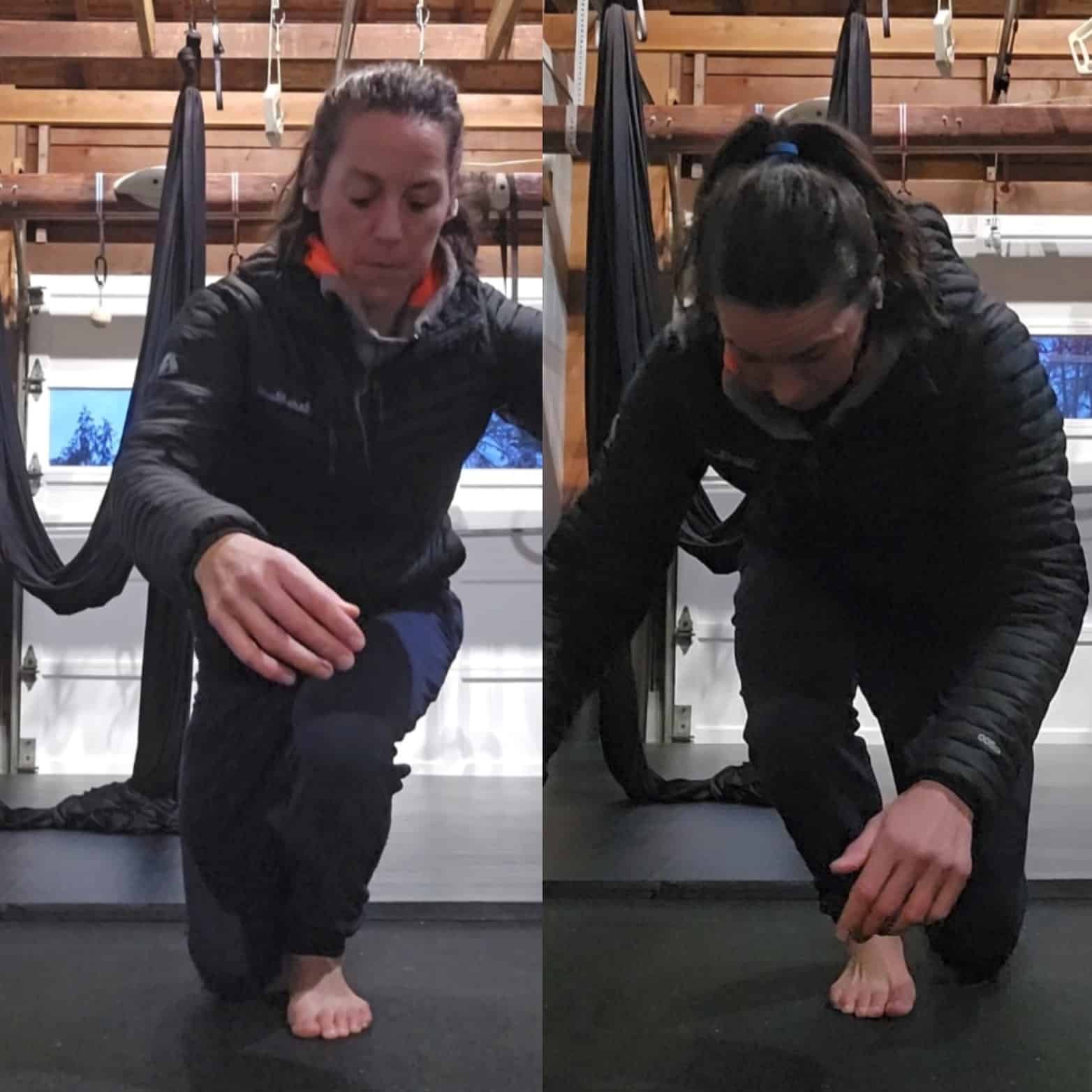
Up Leg, Down Leg (Part 2)
Part One looks at identifying each leg and how each prioritizes a different foot arch.
Directional Bias: Perpendicular vs. Parallel.
Up leg works the foward and back (parallel to ground). Down leg works the up and down (perpendicular to ground).
View this post on Instagram
Video from feature photo: same task, two different methods. Up leg hinges, down leg squats (torso stays upright).
View this post on Instagram
DETAIL: Where you place pressure on the foot influences whether you will squat or hinge. Inner edge brings knee in and you squat. Outer edge brings knee out and you hinge:
View this post on Instagram
STEP UPS & SHINS
Up leg knee just keeps moving foward:
View this post on Instagram
Down leg knee-ankle-weight shift stops half way:
View this post on Instagram
Right-squat-down leg is what I would naturally step up high with.
Strength Training Application
Allow lateral shifting into preferred half movement:
View this post on Instagram
Rack pull – torso pitch and lifted leg action:
View this post on Instagram
Collisions
Down leg (hip) handles impact much better than up leg.
View this post on Instagram
Foot placement (from air) – Up leg lands behind center of mass (push), down leg lands far in front (don’t fall):
View this post on Instagram
[Consider the jumping implications from these last two concepts.]
It’s only fitting to close out this post with the man who first noticed (and termed) this phenomena, Adarian Barr:
Foot placement and center of mass:
View this post on Instagram
Go forward (hinge, up leg) vs. stop forward (squat down leg):
View this post on Instagram
Application to pitching starts:
View this post on Instagram
Have Fun.



